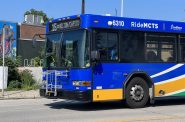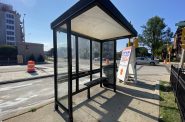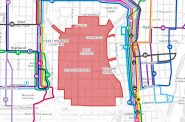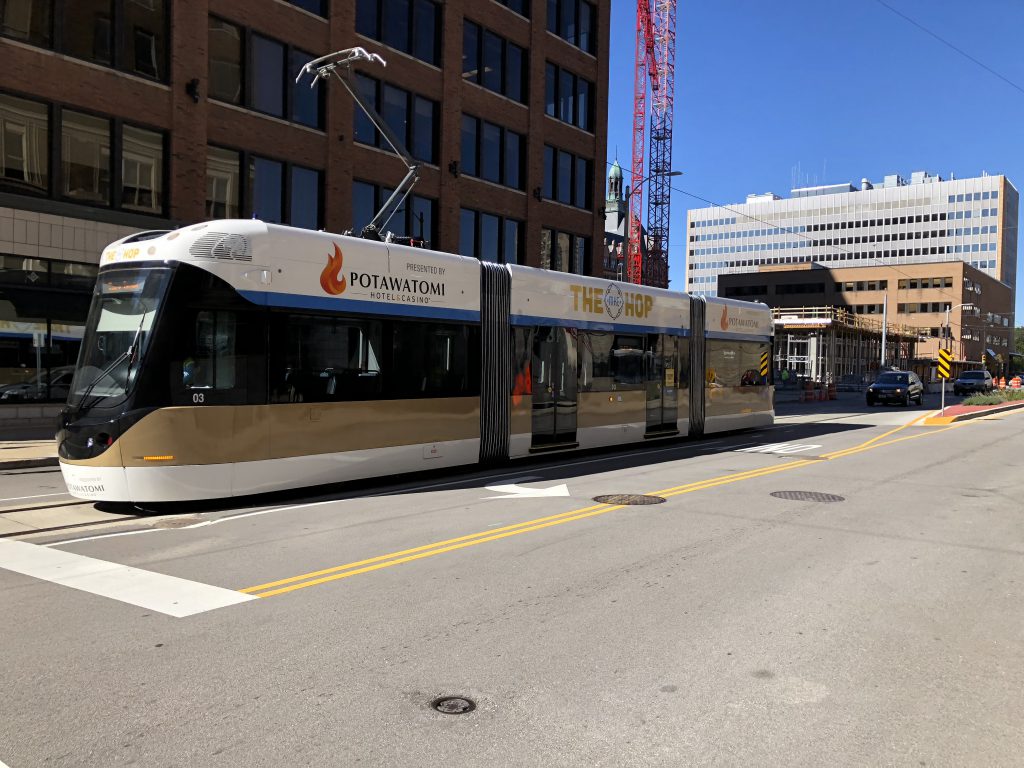City Tops in TIF Money for Streetcar
State tax system forced Milwaukee’s dependence on TIF, WPF report finds.
Milwaukee’s reliance on tax increment financing (TIF) to fund its streetcar system is unusual compared with how other cities have funded their streetcars, according to a new report by the Wisconsin Policy Forum.
The report by the nonpartisan organization compared The Hop to nine peer cities that have developed streetcar systems in the last 20 years.
Of the 10 cities studied, Milwaukee is the only one to use TIF as its primary local revenue source for streetcar development, the study found.
The city used $59 million in TIF funding to construct the first phase of the $124 million Hop and is proposing to use another $51.8 million for extensions.
The remaining part of the project was paid for using federal grants.
Jeff Fleming, spokesman for the Milwaukee city development department, said while other cities have found other resources to pay for their streetcar system, using TIF is not unheard of.
“More significantly, Wisconsin’s tax system limits the kinds of taxes that we can raise for general operating purposes or to support any project, is the property tax,” Fleming said. “Milwaukee’s hands were tied on this and while not common, there is precedent for using TIF for a capital project such as a streetcar.”
TIF dollars paid for 47 percent of Milwaukee’s streetcar project. Only two other cities used TIF financing to pay for their systems, Cincinnati and Portland, which used 12.4 percent and 8.2 percent, respectively.
Rob Henken, president of the Wisconsin Policy Forum, agreed. The study found that most financing mechanisms used by other cities to develop their streetcar systems are not available to Milwaukee under current state law.
TIF subsidizes a development by diverting a portion of the project’s taxes to help finance the project. Typically, a TIF district is created by a local government. The money a city invests in TIF projects is often obtained through the sale of bonds, which are then repaid over time by the property tax revenue generated by the new project. If the incremental revenue is not enough to pay off the bonds, the local government has to make up the difference.
For the first phase of the streetcar project, the city extended the life of existing TIF districts. For the second phase, the city will extend the streetcar to Milwaukee’s lakefront, a new TIF district that is being created.
In May, Milwaukee Mayor Tom Barrett announced a plan that would add 2.4 miles to the 2.1-mile streetcar system. This would extend the streetcar to Milwaukee’s convention center and into Walker’s Point, just south of the Historic Third Ward, and north into the city’s Bronzeville neighborhood.
The extension would be paid for with money from property tax revenue generated from new development in six tax financing districts near downtown. The streetcar extension would cost $47 million. A public plaza connected to the city’s convention center downtown would cost an additional $5 million, according to city plans.
The city council has postponed voting on that extension several times.
“Regardless of whether one agrees with spending public dollars on a downtown streetcar, it is important to understand why city leaders felt compelled to use TIF and the strengths and weaknesses of that approach compared to other options,” Henken said.
Fleming said it’s important to note Milwaukee used federal grant dollars and TIF financing to protect local taxpayers from incurring the costs.
“Doing so tapped into the increased property values immediately surrounding the streetcar,” Fleming said. “There’s no question that property values are increasing within a quarter mile within the streetcar line.”
He acknowledged people have raised questions if the streetcar is responsible for increased property values.
“There is no way to determine if that is in fact the case,” Fleming said. “However, we do have direct information from developers that they are choosing to do projects (based on the streetcar).”
Henken said future streetcar debates will probably not focus on whether TIF is the correct approach, rather if the streetcar itself is worthy of additional major public sector investment.
Report: Milwaukee Used More TIF Money Than Any Other City To Fund The Hop was originally published by Wisconsin Public Radio.
More about the Milwaukee Streetcar
For more project details, including the project timeline, financing, route and possible extensions, see our extensive past coverage.
- FTA Tells Milwaukee to Crack Down on Fare Evasion — Even Where Fares Don’t Exist - Graham Kilmer - Dec 12th, 2025
- Alderman, State Allies Seek Federal Help to Kill the Streetcar - Jeramey Jannene - Oct 28th, 2025
- Streetcar Service Suspended Following Truck Crash - Jeramey Jannene - Oct 21st, 2025
- One Alderman’s Quest To Defund The Streetcar - Jeramey Jannene - Oct 18th, 2025
- Another Streetcar Collision - Jeramey Jannene - Jun 27th, 2025
- Streetcar Hit By Apparent Red Light Runner - Jeramey Jannene - Jun 16th, 2025
- Streetcar Will Run On Consolidated Route During Summerfest - Jeramey Jannene - Jun 11th, 2025
- City Hall: Milwaukee Must Replace Failing Streetcar Switches - Jeramey Jannene - Feb 24th, 2025
- Streetcar Confronts Limited Funding, Operations Challenges - Evan Casey - Jan 22nd, 2025
- Council Kills Streetcar’s ‘Festivals Line’ - Jeramey Jannene - Jul 31st, 2024
Read more about Milwaukee Streetcar here
Political Contributions Tracker
Displaying political contributions between people mentioned in this story. Learn more.
- July 10, 2018 - Tom Barrett received $50 from Jeff Fleming
- September 14, 2017 - Tom Barrett received $35 from Jeff Fleming
- March 22, 2016 - Tom Barrett received $400 from Jeff Fleming
- August 29, 2015 - Tom Barrett received $100 from Jeff Fleming
Transportation
-
MCTS Adds 28 New Buses
 Jul 13th, 2024 by Graham Kilmer
Jul 13th, 2024 by Graham Kilmer
-
MCTS Designing New Bus Shelters
 Jul 10th, 2024 by Graham Kilmer
Jul 10th, 2024 by Graham Kilmer
-
MCTS Updates RNC Bus Detours To Better Serve Downtown, Riders
 Jul 9th, 2024 by Jeramey Jannene
Jul 9th, 2024 by Jeramey Jannene





















